As an Amazon Associate I earn from qualifying purchases. This website also participates in other affiliate programs and may earn commissions if you shop through the links used on this website.
(This article was originally published on August 22, 2022 and was last updated on October 3, 2022)
If you are used to growing typical sweet or Genovese basil, you will be most familiar with green leaved types of basil.
But there are also cultivars of basil that have purplish-red leaves. And these are sometimes called red basil.
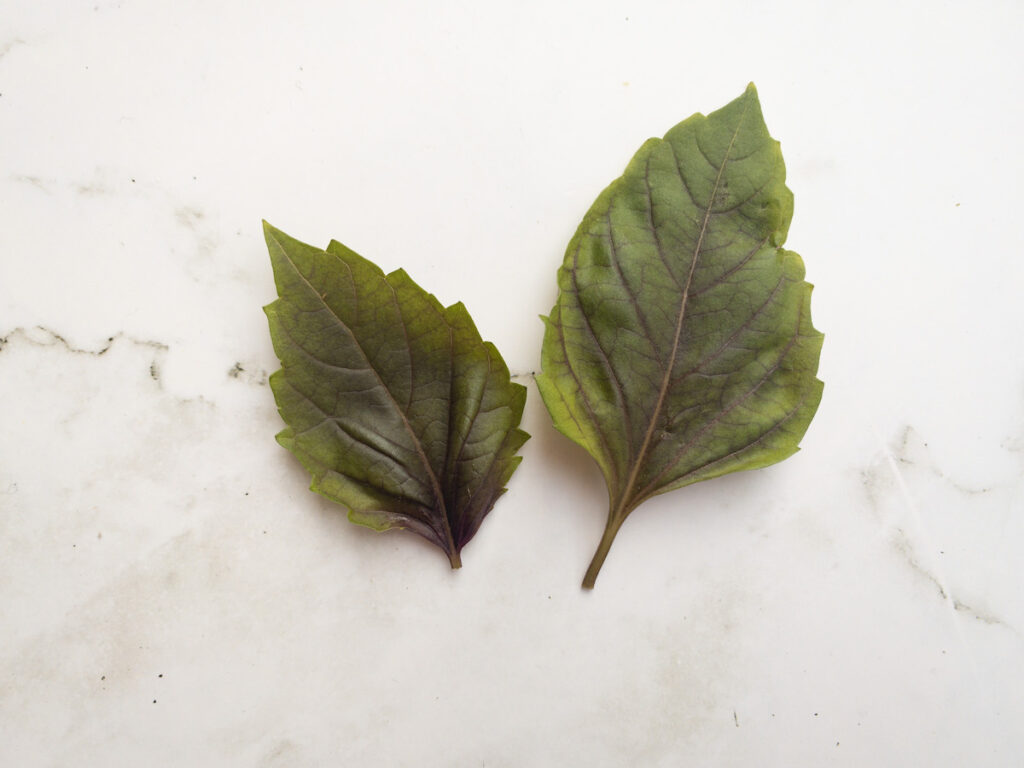
What is Red Basil?
Red basil is a rather misleading name for a group of common basil, or sweet basil, cultivars which have a high level of red pigmentation in their leaves. These red basil varietals are also sometimes described and sold as purple basil, which can lead to some confusion over the names.
For various varietals of Ocimum basilicum var. purpurascens, the names purple basil and red basil can be used interchangeably.
Types of sweet basil with purple/red leaves are sometimes sold labelled simply ‘red basil’ without any reference to any other particular name.
One cultivar in particular, however, is most typically described as red rather than purple. This is the cultivar called ‘Red Rubin’ which, of course, has the word ‘red’ in its name.
We have already written briefly about this cultivar in our guide in purple basil. But in this article, we will look at this particular red basil cultivar in a little more depth.
Like other purple basils or red basils, Red Rubin has high levels of anthocyanins in its foliage, which gives them their reddish (really more purple) hue.
Introducing Red Rubin Basil
Red rubin basil is a cultivated variety of Ocimum basilicum var. purpurascens derived from another purple/red leaved basil called Dark Opal.
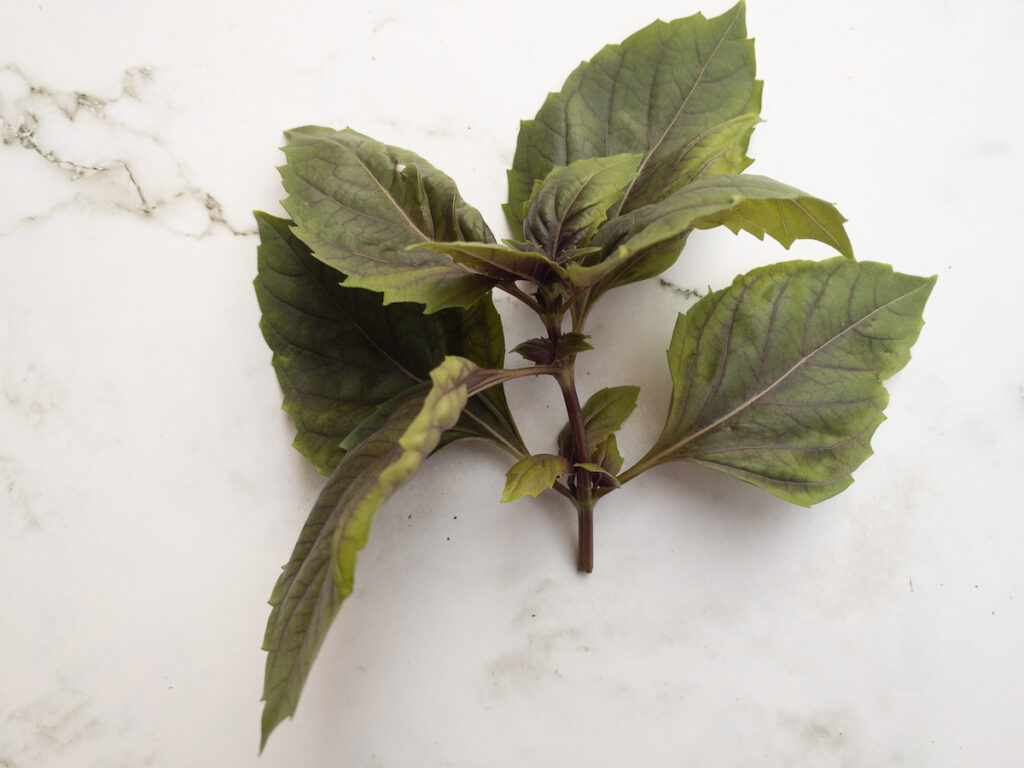
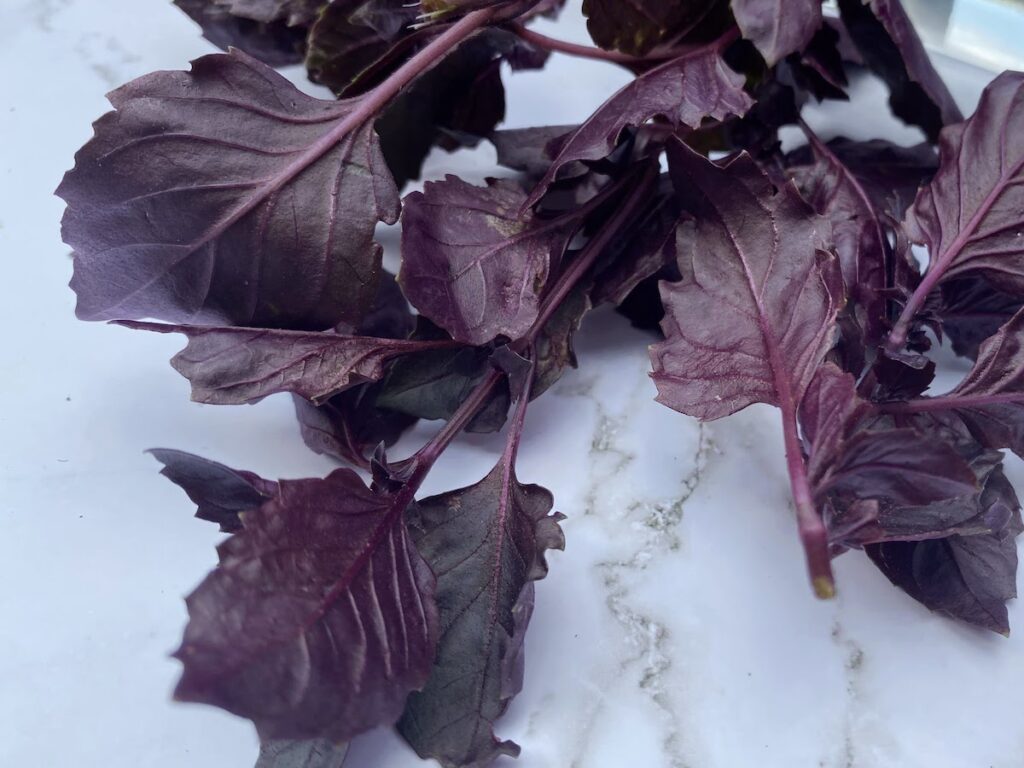
With a somewhat stronger flavor than other sweet basils, Red Rubin basil is fast growing annual herb, reaching a plant height of around 27 inches (70cm).
With its rich purple leaves, and small pink flowers that are a bonus in late summer, Red Rubin basil is not only a great culinary herb to consider growing, but also an attractive ornamental plant for your flower garden.
Like other basils, Red Rubin is as wonderful for wildlife as it is for you, and can be used to help in pest control and productive growth in an organic garden.
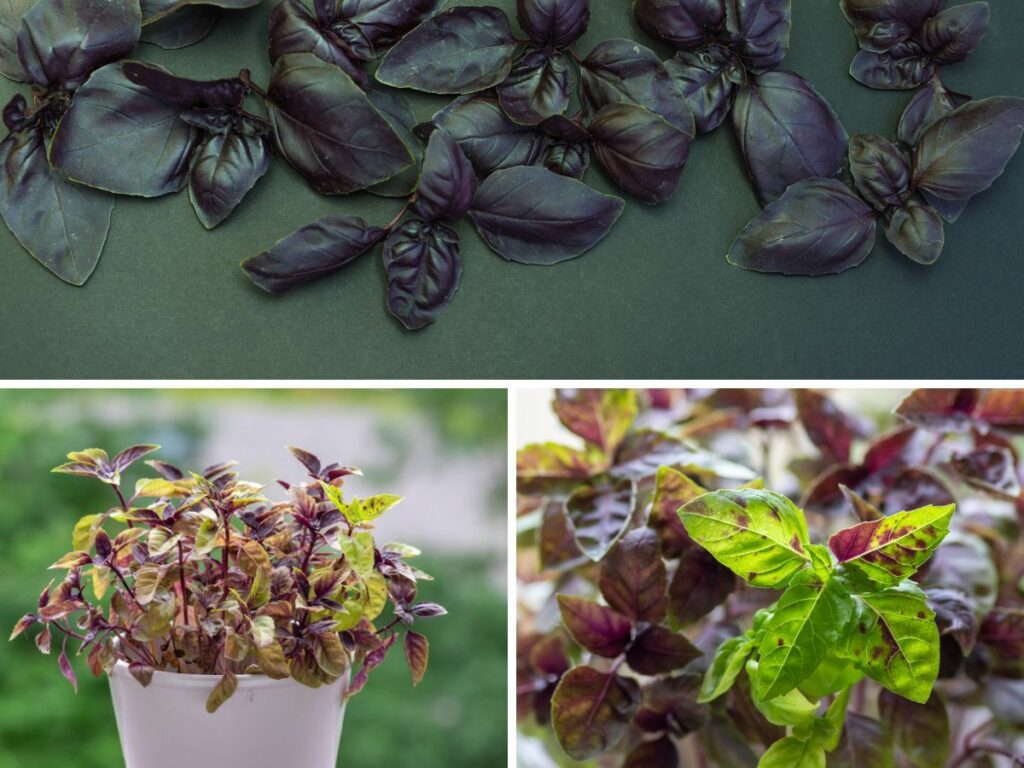
Origins of Red Rubin Basil
Way back in the 1950s, plant explorers harvested wild basil seeds in Turkey and plant breeders working within a program for the US Department of Agriculture developed a cultivar of basil with purple leaves called Dark Opal.
Many other plant breeders then worked with this cultivar to create new plants that could more reliably give gardeners purple leaved basil from seeds.
Red Rubin was a re-selection of Dark Opal made by a firm in Europe.
Specifically, it was bred in Denmark in 1992. It was debuted to North American gardeners in 1993 and has since become a very popular purple or red basil variety, and wonderful addition to an edible garden.
Why You Should Try Growing Red Rubin Basil
Red Rubin is attractive in flower beds and borders, and its ornamental merits make it a great part of an ‘edimental’ planting scheme or in a designated herb garden.
It also works well as a pleasing looking companion plant in a summer vegetable garden, where it can be an excellent companion plant for a range of common crops.
The dark red pigmentation in the leaves also brings health benefits, so can be a healthy addition to the homegrown diet.
This basil tastes great too, working well in a range of recipes where a different sweet basil varietal might be used.
And if you let some plants flower, bees and other pollinators and beneficial insects will also win.
I have also found that some pests won’t trouble red/purple basil types as much as they will green varieties, so this may be another benefit. Though certain pests can still pose an issue, some may leave these particular basil plants alone.
How to Grow Red Rubin Basil
If you can grow any other sweet basil cultivar, then you can grow Red Rubin, too. This is relatively easy to grow. If you grow it in the right place, and care for it correctly, it should be a rewarding option that won’t take up too much of your time.
Where to Grow Red Rubin
Red basil will grow best outdoors, in a sunny spot that remains above 50 degrees F (10 degrees C). You might grow it in a sunny border alongside other flowering plants, or as a companion plant for tomatoes and other crops in your vegetable garden through the summer.
You can also grow red basil in containers, either in outdoor containers in your garden or indoors. Worth noting, growing this type of basil indoors can be somewhat challenging and takes more time and effort than growing outdoors. And outside container-grown plants will also require more care than growing plants in suitable garden soil.
The soil should be reasonably fertile, moist yet free-draining. It is important not to let the growing medium dry out entirely. But even more important to make sure that water logging does not occur.
If you would like the color of the leaves to be as vibrant as possible, it is important to place this type of basil in as sunny as spot as you can, with as much bright full sunlight as possible.
Sowing Red Rubin Basil
Red basil, in temperate climate gardens, is typically planted indoors in a heated propagator, or in a suitable warm location on a sunny windowsill. Seeds are sown around 6mm deep, in small pots, seed trays or soil blocks. When temperatures are kept at around 69F or 21C, these seeds should germinate within 1-2 weeks.
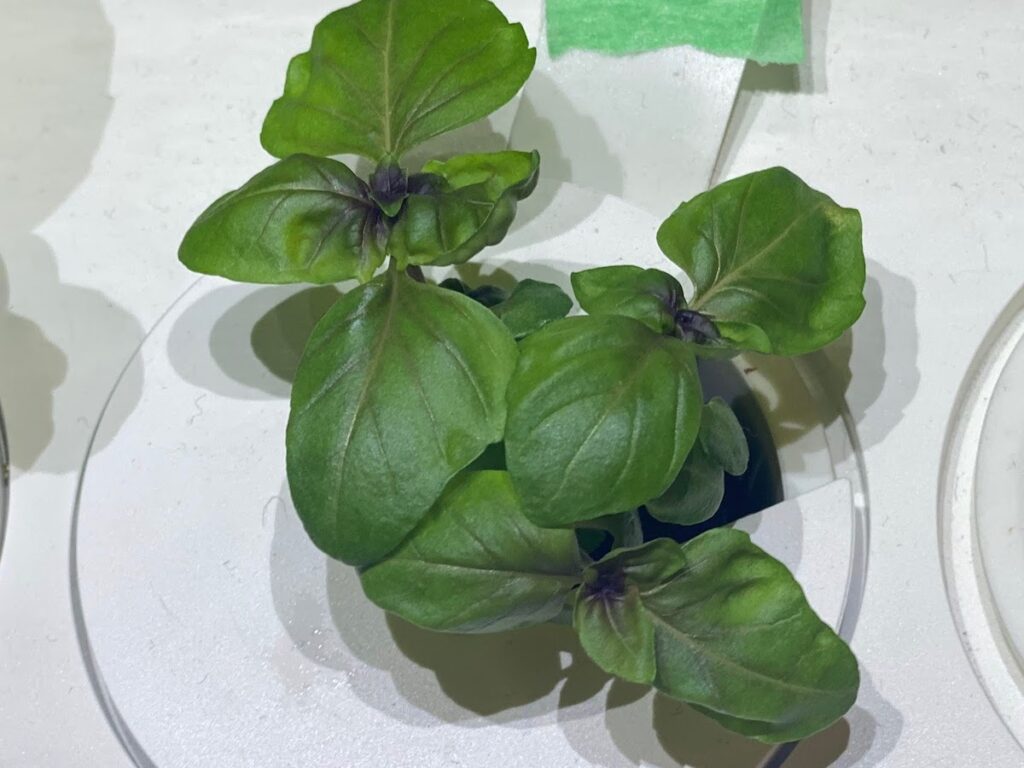
Planting Red Rubin
Young red basil seedlings are then typically pricked out if required, when they have 3-4 sets of true leaves, hardened off, then planted out into the garden in fertile soil or outdoor pots once the weather has warmed reliably in late spring or early summer.
Caring for Red Rubin Basil
- Water red basil frequently during dry spells, especially when growing in pots. Keep soil moist, but ensure you don’t overwater and that excess water can drain away freely.
- Mulch with organic matter around plants upon planting, but make sure the mulch does not touch the stems or they can rot.
- Remember that red Rubin cannot cope with cold temperatures, meaning the growing season lasts after the spring frost, until the autumn frost. You can, however, take cuttings from your plant so that you can grow it again in your garden the following year.
Harvesting Red Rubin Basil
As with other types of sweet basil, Red Rubin will become bushier the more it is harvested. So harvest little and often to make your plants as healthy as possible.
Prevent flowering to continue to harvest the best-tasting leaves.
But remember, allowing at least some plants to flower can allow you to enjoy them visually, and will also provide benefits for pollinators and other wildlife in your garden.
Is Red Rubin Basil Edible?
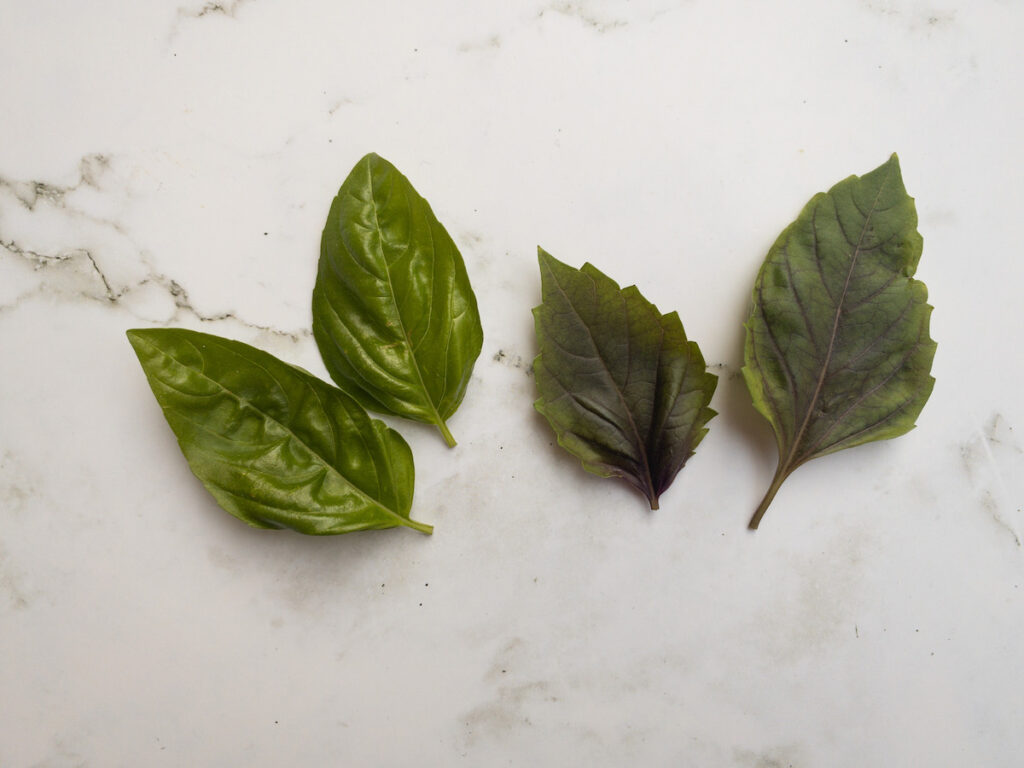
Red Rubin basil is edible and can be used in your kitchen creations.
This purple-leaved basil can look particularly appealing in salads, or as a garnish. And you can use it to make a purplish pesto, too, to have something a little different from the green variety.
Where to Buy Red Basil
You should not have any difficulty in sourcing seeds for Red Rubin, or any other specific ‘red basil’ or purple basil variety.
Here are some sources for red basil in the US:
- https://www.beyondorganicseed.com/products/red-rubin-basil
- https://www.johnnyseeds.com/herbs/basil/purple-basil/red-rubin-organic-basil-seed-924G.html
- https://www.trueleafmarket.com/products/basil-seeds-red-rubin-organic
For reliably reddish purple leaves, attractive plants, and a pleasing culinary herb, red basil is a great option to consider growing in your garden.
Elizabeth is a garden designer, consultancy and writer passionate about growing herbs and other edibles in a sustainable way. She works on her own 1/3 acre garden, growing basil alongside her tomatoes in her polytunnel, and indoors alongside a range of other herbs and crops. She loves inspiring others to get growing and enjoying a home grown diet, wherever they live in the world.

